Power of the dog

You could be excused for thinking the curious canine has sat faithfully for its entire life at the Hume Highway rest area “five miles from Gundagai”, in southeastern New South Wales. But you couldn’t be further from the truth.
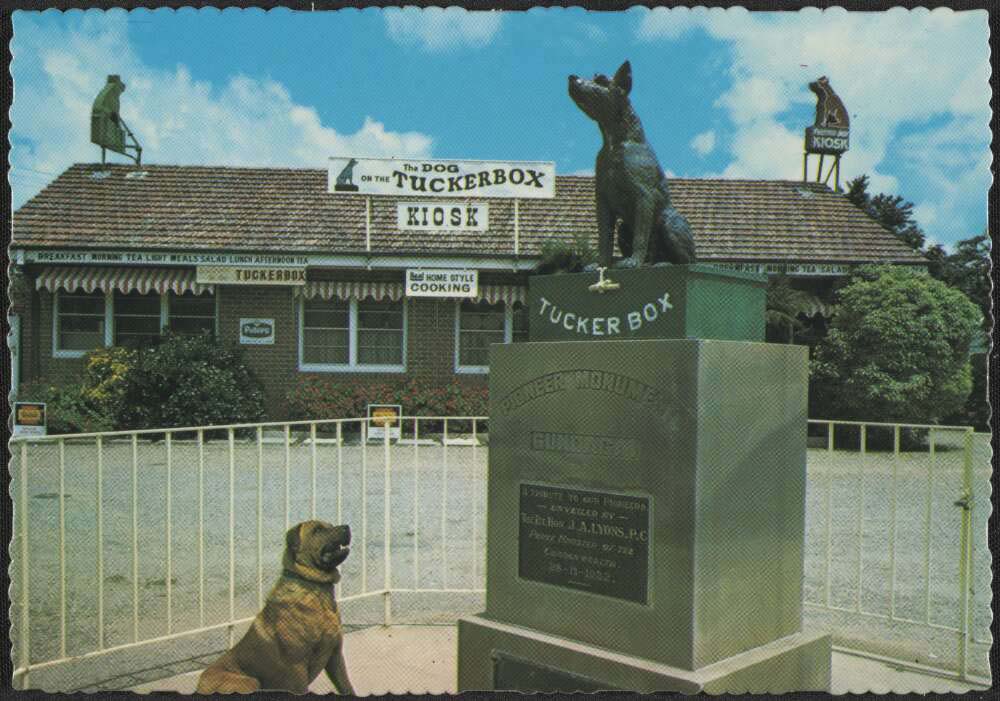
The dog-on-the-tuckerbox legend dates to the mid-1800s when bullock teams – the 19th-century equivalents of semitrailers – transported supplies between Sydney and Melbourne. Depending on weather and track conditions, the trip could take weeks. The bullock team drivers, known as bullockies, established a series of camps, each separated by about a day’s travel, where they could rest overnight, and, if needed, change teams.
To help pass the time around the campfire, or while waiting to cross a flooded creek, the bullockies would often recite rhymes, sometimes of a risqué nature. If one had to leave his team and seek help or scout ahead to check track conditions, his dog would usually guard his possessions. That included one of a bullocky’s most prized objects – his tuckerbox, where he’d keep his food. It was like the modern-day esky used by tradies.
Although there are several versions of the dog-on-the tuckerbox story, the one recognised by most folklorists involves Bill the Bullocky, an 1850s drover who, one day, exhausted from trying to drag his wagon out of a bog nine miles from Gundagai, took a break for a well-earned lunch. However, when poor Bill reached for his tuckerbox, he found that his dog had unfortunately fouled it. Regardless of whether the incident was true or not, a doggerel poem entitled “Bullocky Bill”, published anonymously in the mid-1850s about the unfortunate incident, helped spread the story beyond just bullocky camps.
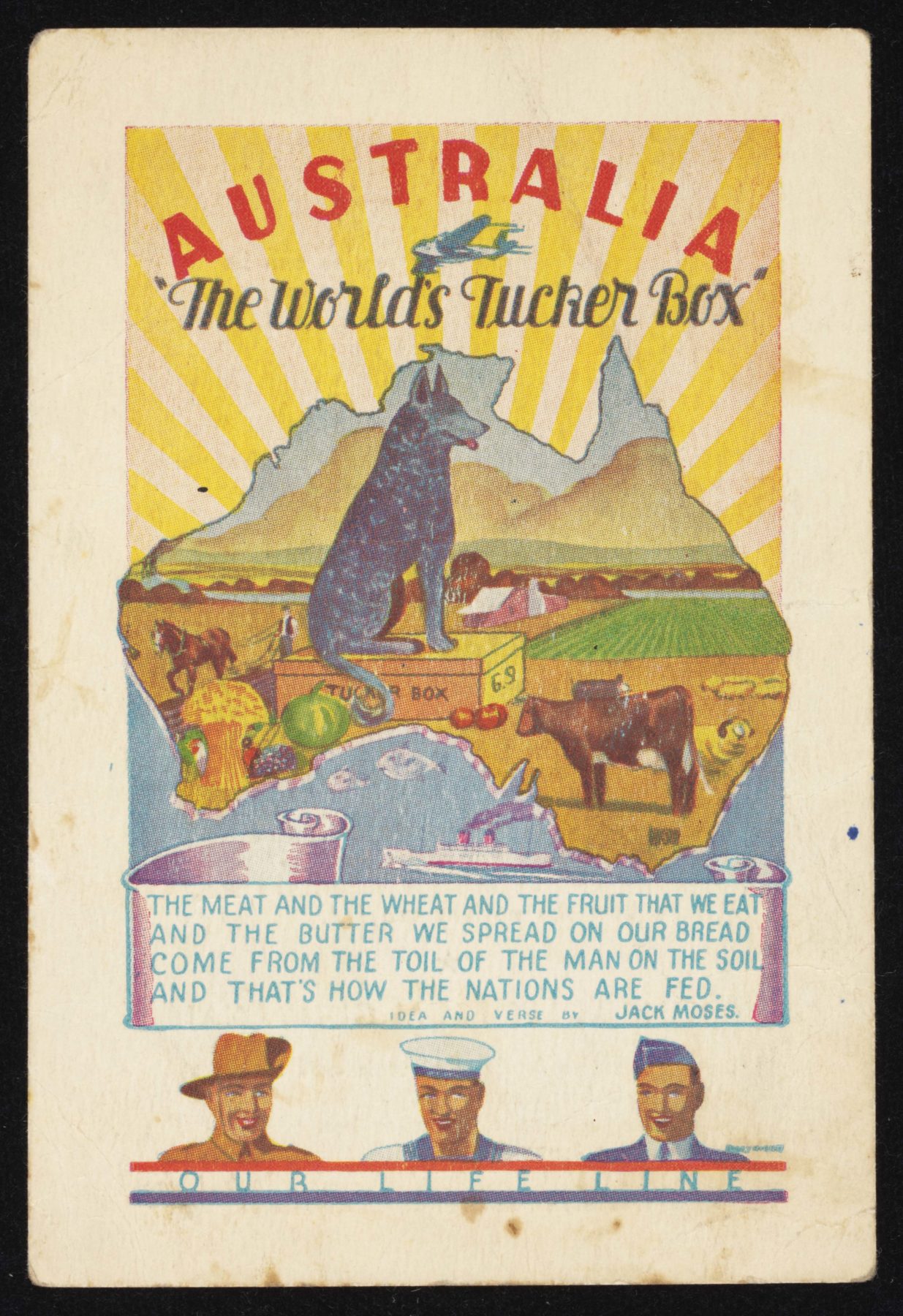
Cris Piper of Adelong, whose father’s uncle, Reg Livingston, ran the Coolac Store for many years in the early 1900s, believes “Bill” was likely bogged at Muttama Creek, located, you guessed it, nine miles from Gundagai. “Reg would often tell us that, even up to the early 1930s, bullock teams going south would camp on the north side of Muttama Creek, near the Nine Mile Peg, waiting for water levels to subside,” Cris says.
The 19th-century ode gained further notoriety in 1923 when Jack Moses wrote a booklet, Beyond the City Gates, which recounted the fable about the famous dog in a new poem called “Nine Miles from Gundagai”. Jack apparently considered the original text too crude, so he removed the “h” from an offending word so that one of the lines instead read “and the dog sat on the tuckerbox”.
Sometime in the next year or two, the first physical incarnation of the dog was erected nine miles out of Gundagai, near current-day Coolac. Crudely cut from a sheet of galvanised iron and tacked on to the side of a tall pole, it was more a two-dimensional silhouette than a statue. Then, in 1928, Gundagai stonemason Frank Rusconi suggested a more permanent memorial dedicated to pioneers and bullockies be erected. The locals loved the idea and Frank was duly commissioned to create the statue.
It was originally to be erected on the roadside near the Nine Mile Peg, but local authorities instead chose the Five Mile (from Gundagai) campsite on the basis that it was more convenient to the Hume Highway and closer to Gundagai, thereby more beneficial to the town’s tourism.
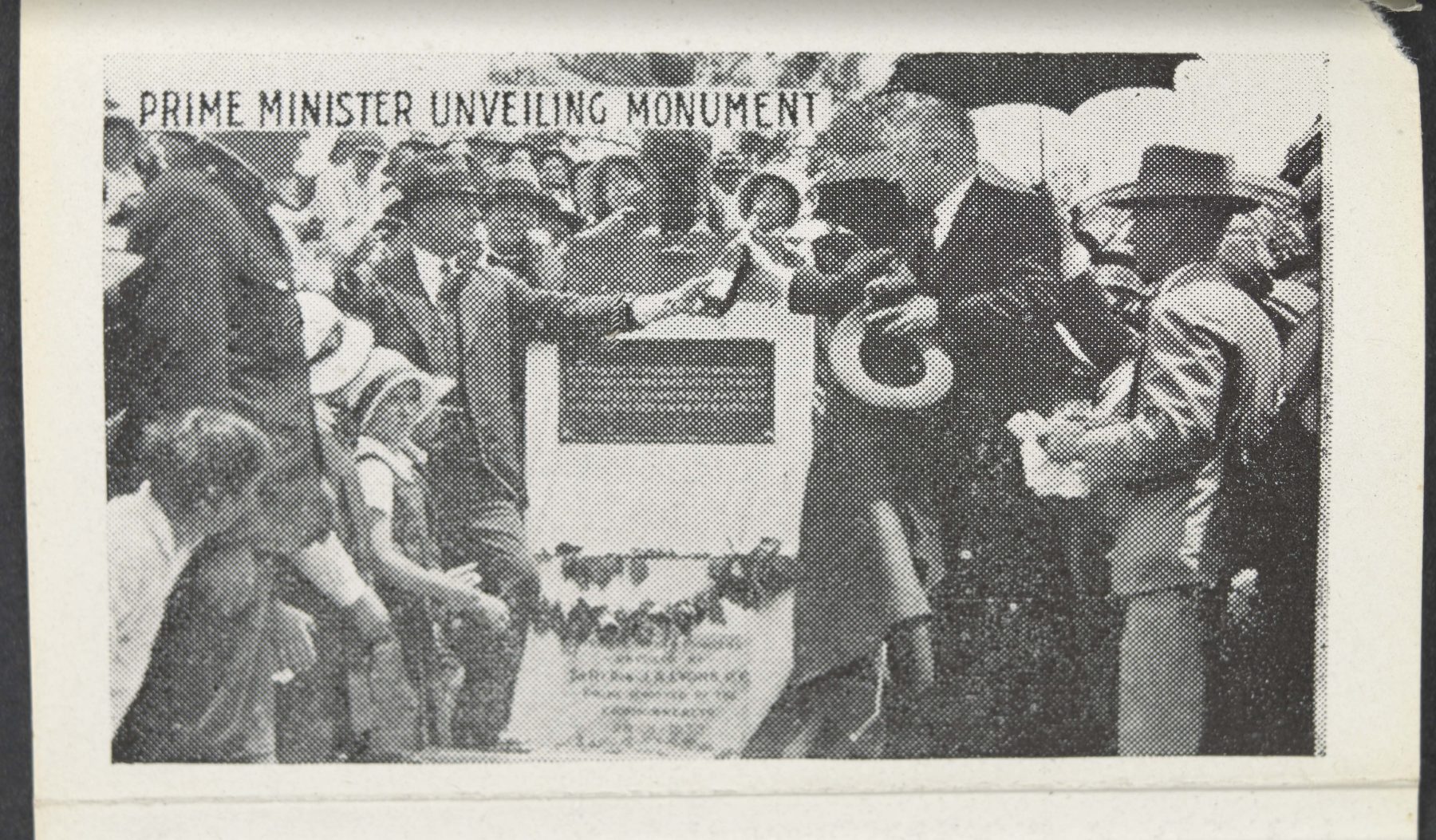
Most Australians were aware of the dog-on-the-tuckerbox story, so it was a big deal when the statue was unveiled on 28 November 1932. It was so big, in fact, that Prime Minister Joseph Lyons did the honours. Today, if you call into the Beehive Hotel at Coolac there’s a good chance you’ll find 54-year-old local Robert Carberry propped up on a bar stool.
He’ll proudly tell you that in his great-grandfather’s role as shire president, Herbert Patrick Carberry (HP) accompanied the PM at the unveiling of the dog, and presented him with a bottle of champagne. He’ll also tell you it was on HP’s property that the original two-dimensional cut-out was hung. Where that treasure is now “nobody knows”, Robert says. “It could be lying in a paddock somewhere or at the bottom of the local tip.”

Despite its friendly disposition, over the years the famous dog has been the subject of quite a bit of unwanted attention. Shortly after it was unveiled, the name of Joseph Lyons was chiselled away from the base of the monument, presumably as a political act, and in July 2019 it was pushed off its plinth resulting in several deep scratches and a broken ear.
Ouch!
The national landmark was bundled up and rushed in the back of a ute (the preferred method of transport for all cattle dogs) to the Australian National University’s School of Art and Design, where it was eventually restored to full health and returned to the rest stop.
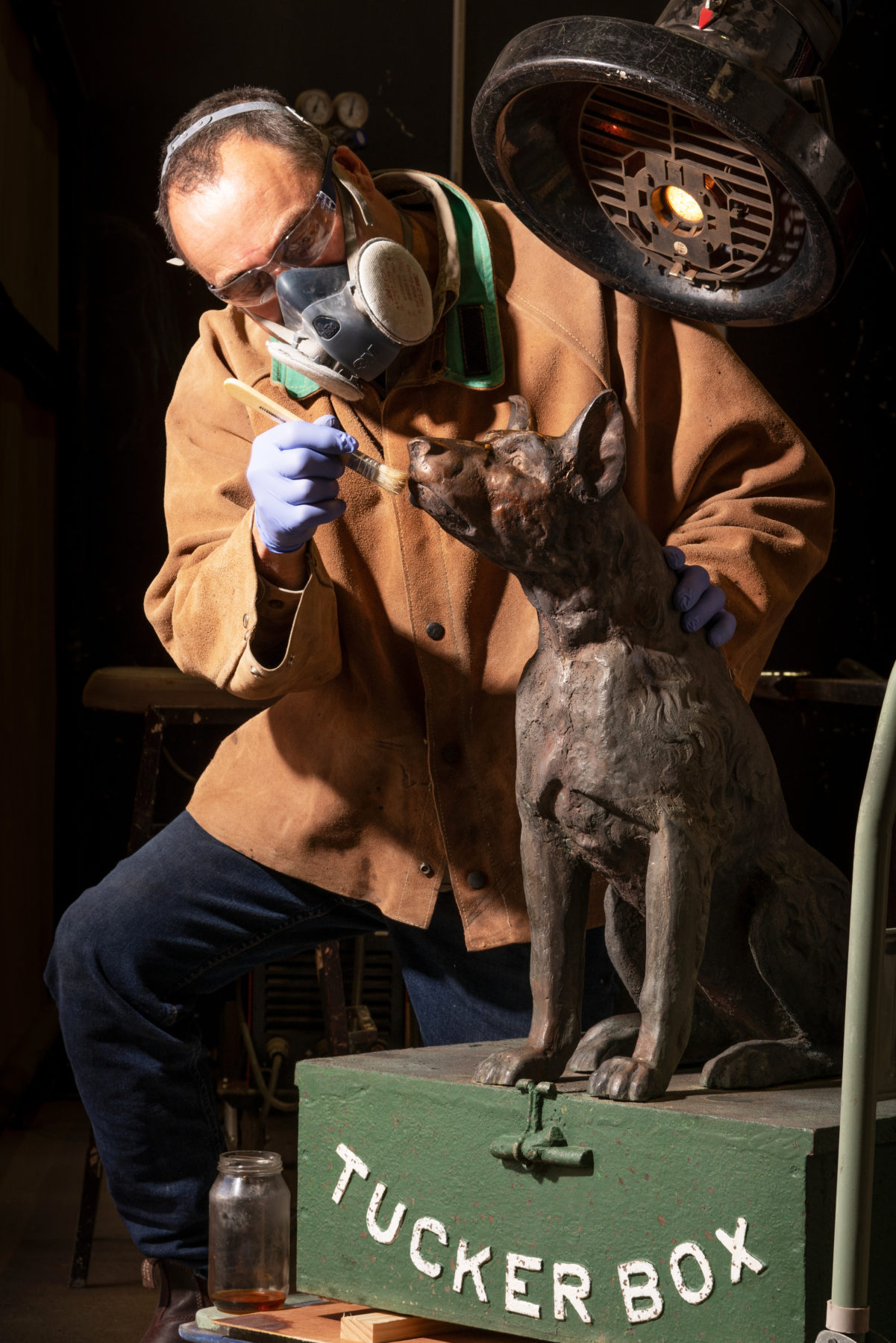
Being hauled away for facial surgery, however, was nothing compared with the harrowing experience the bronze dog endured on the night of 27 October 1981, when, under cover of darkness, a group of students from the Canberra College of Advanced Education (CCAE), now University of Canberra, pilfered the famous sculpture.
Judith Corkhill was living at that time in Reid House, a CCAE student residence. “Sometime late in the evening the call went out by a group of senior Reidians asking for volunteers to take part in a stealth operation to steal the dog as part of a scavenger hunt,” explains Judith, adding, “A Kingswood car had been secured and was ready to go.”
Judith admits she opted out, thinking the others wouldn’t go through with the dog-napping. “But how wrong I was,” she recalls. She was woken very early the next morning by laughter and people running down the corridor and shrieks of “They did it, they got the dog!” Judith remembers clearly the moment she set eyes on the abducted dog. “It was on the concourse near the entrance to the refectory, a cardboard sign with “RSVP” written in large letters hanging around its neck,” she says.
When Gundagai woke to find their famed dog missing, it didn’t take long for word to spread, and a nationwide hunt was underway.
Later that morning, officers at Belconnen police station in Canberra received an anonymous tip-off and raced to the campus, where they located and seized the dog. Of course, by then, the perpetrators had well and truly vanished.
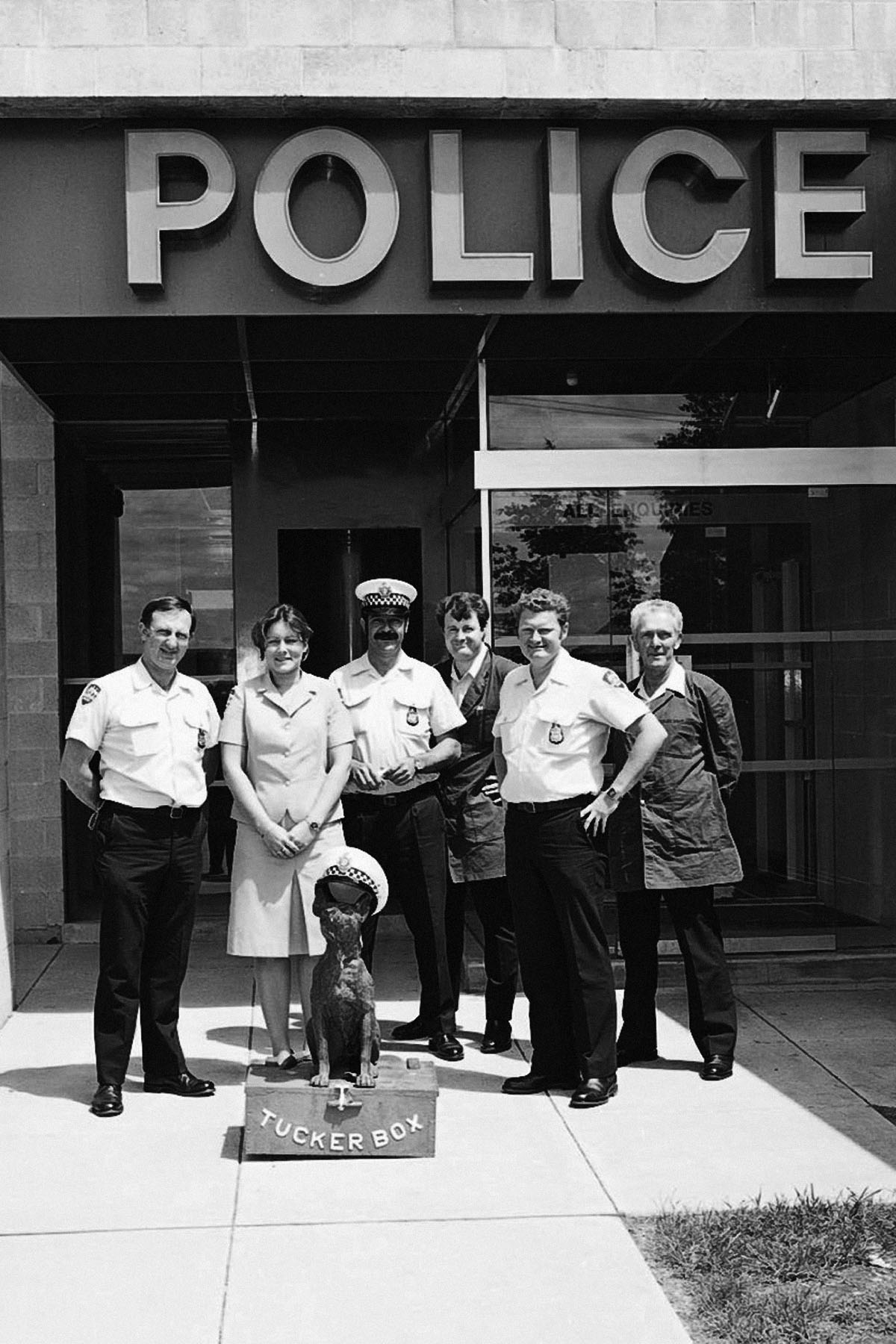
Retired police officer Melita Zielonko, 21 at the time, remembers the day as if it were yesterday. “We weren’t treating the situation lightly,” she recalls. “We thought what a stupid prank it was to steal a national icon and we were focused on finding it and getting it back to its rightful home.” Forty-one years on, the Dog on the Tuckerbox monument is more firmly entrenched than ever in our national psyche. “I still think of it every time I drive past Gundagai,” Melita says. “It was a career highlight.”
According to some business owners, the dog may be a little too popular with travellers on the Hume Highway, with many stopping for the obligatory photo with the dog but not venturing into the town. There was even discussion in 2021 of moving the dog from its highway home of 90 years and into Gundagai.

However, that was abandoned and, instead, in an attempt to connect the iconic landmark to the town’s CBD, sculptor Darien Pullen was commissioned in 2021 to create three puppy statues, which were recently placed outside businesses along the main street. “Dog on the Tuckerbox has had a litter of three pups,” screamed the media release.
“Scoop” is on the pavement outside the former newsagency with a newspaper in its mouth; “Chip” is outside Lott’s Family Hotel waiting for its owner; and “Snag” is chomping on some sausages outside Smart’s Butchery. The plan is for even more puppies to join their mates in years to come. I suspect Bill the Bullocky would be laughing in his grave. All this ongoing fuss over his dog’s misdirected droppings.




